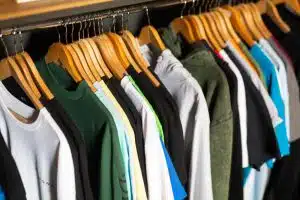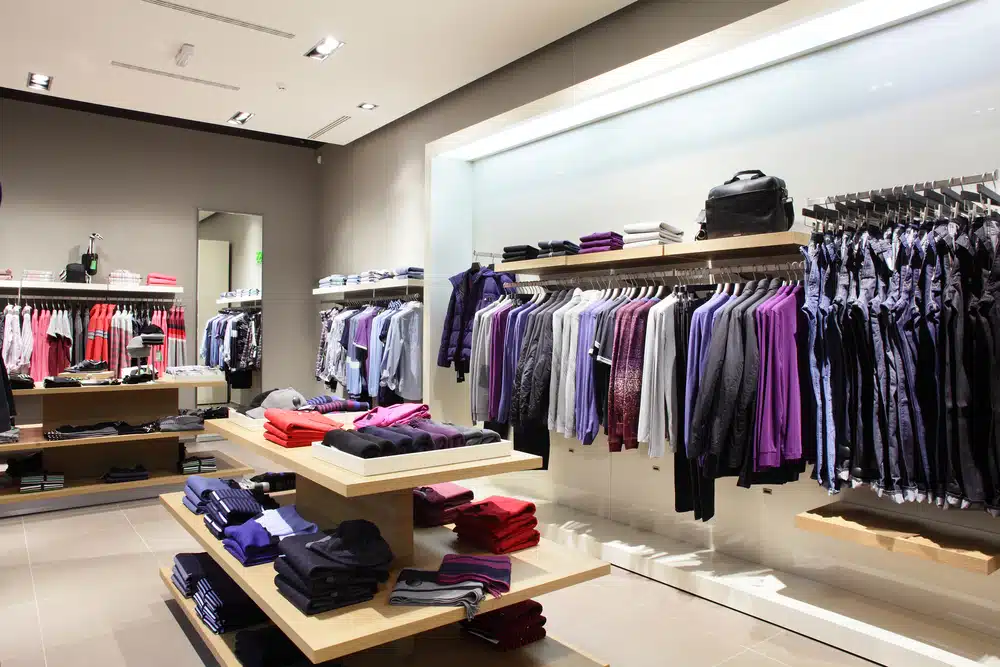
In addition, more specialised items are gaining in popularity as consumers look to express themselves through their clothing choices. Boutiques, independent stores and personalized items are all on the rise. All of these changes point to an exciting new era for UK’s clothing sector, which looks set to continue offering increasingly varied retail options for many years to come.
As consumers have become more interested in branded fashion labels, the clothing sector has developed. In response, many retailers have specialised in a particular type of clothing (for example, men’s casual wear) to change the nature of their businesses.
Clothes shop market sector trends
Retail outlets are now brightened and modernised to attract customers, and the appearance of their shops is really important. To maintain a stylish and contemporary image, many clothing chains renovate their premises periodically.
It has become more difficult for small independent clothing stores that target the lower market to compete because many non-specialist retailers, particularly supermarkets, now sell clothes.
Among the developments in the sector are:
- An increase in clothing imports from countries with cheaper manufacturing costs, although some manufacturers have recently returned to the UK to ‘reshore’ their operations
- Oversaturation of the market with more clothes available than consumers want
- Most of the major chain stores and some independents have launched ecommerce websites, including some online-only specialists, some online-only specialists, and some online-only specialists
Between 2000 and 2009, clothing prices fell year on year before recovering in 2010. While many clothing retailers cut prices during the economic downturn of the late 2000s and early 2010s, average clothing prices actually increased, as retailers had to pass on rising manufacturing costs to customers. Prices rose strongly during 2017 as well, continuing the trend of rising prices. Clothing buyers looked to get the most for their money during the recession, and value retailers like Primark outperformed the rest of the sector. Although the vote to leave the EU and uncertainty surrounding Brexit negotiations have squeezed high street spending, they have performed well.
Since the internet’s huge growth, we’ve purchased many things online, including clothes. Online retailers such as Asos sell clothes in addition to established High Street retailers’ e-commerce websites. In addition to large brands and retailers, eBay offers a Fashion Outlet through which individual buyers and sellers can sell unwanted clothing items (new and used). Currently, Tesco and other supermarket giants are also sellingclothes online as a result of the rise of ecommerce in the clothing industry. It’s generally agreed that the internet is a threat to high street shops, despite offering opportunities for retailers who embrace it. As m-commerce (shopping using a smartphone or tablet) becomes increasingly popular, the value of online clothing sales is predicted to increase.
It has been a difficult year for clothing retailers on the High Street, with many struggling in 2016 and 2017. Sales decreased by 5.9% year over year in September 2016. Many factors contribute to the poor results, including:
- As a result of the unseasonably warm September of 2016, many racks of autumn and winter clothing went unsold
- There is a recurrent problem of overbuying and deep discounting, which leads to intense price competition and customers being unwilling to pay full price
- Online sales are growing, especially among young shoppers who enjoy fast delivery, cheap prices, and fresh fashions
- Falling consumer confidence, rising inflation, and stagnant wages
- Consumer spending has shifted from clothes to eating out and traveling
There was a small increase in sales in 2017, but it was a small increase. It was predicted that consumer spending would be squeezed particularly hard on mid-market clothing stores in 2018 by KPMG/Ipsos Retail. Online sales accounted for nearly a quarter of all retail clothing sales in 2017, up from nearly a quarter in 2016. It is expected that this trend will continue.
After the Brexit vote weakened the pound, import costs increased in 2017. Retailers were unable to pass on the increased costs due to rising inflation, which reduced consumer spending power. It is expected that consumers will continue to seek value for money. Despite forecasted growth in the clothing industry, the weak pound is expected to increase import costs and manufacturing costs most of the time.
Keeping up to date with the clothing retailing sector
Keep up with industry developments by joining a trade association. The clothing industry is represented by the following trade associations:
- Fashion and Textiles Association of the United Kingdom (UKFT)
- Association of Suppliers to the British Clothing Industry
Retailers are also affected by these, even though they are primarily aimed at the manufacturing end. More information can be found on their websites.
Trade shows
Trade shows are a great way to network, launch products and find new suppliers in the apparel and clothing industry. Apparel & Clothing trade shows in the United Kingdom can be a great opportunity for companies, retailers, distributors and designers looking to expand their business networks or acquire new customers.
These events offer participants access to exclusive product launches, fashion shows, brand showcases and educational seminars. The attendees have excellent opportunities to keep their finger on the pulse of new trends, fabrics and technologies used in the industry. This ensures the UK apparel & clothing sector remains competitive when it comes to innovation, growth and sustainability.
Fashion shows and trade fairs are great places to learn about upcoming trends and fashions. You can meet suppliers and designers and plan your future stock purchases. It is possible to find trade show details on Exhibitions UK’s website.
Read more: Legal issues clothes shops face
Conclusion
The UK’s clothes shop market is responding to the ever-changing needs of consumers, with trends showing that affordable prices and ethical practices are becoming increasingly important. An August 2019 survey conducted by Mintel showed that 44% of shoppers consider environmental sustainability when buying clothing, and over half seek value for money.
These same shoppers also revealed that they were likely to purchase clothes anywhere, as opposed to being loyal to one brand – demonstrating the importance of making apparel accessible and functioning as an omnichannel retailer. With this knowledge in mind, it is clear that a combination of customer-centric care, discounts and good ethics are necessary in order for retailers in the state to be successful.
Lee Jones is a seasoned Business Finance Specialist with over two decades of invaluable experience in the financial sector. With a keen eye for market trends and a passion for helping businesses thrive, Lee has become a trusted advisor to countless organizations seeking to navigate the complexities of finance.


